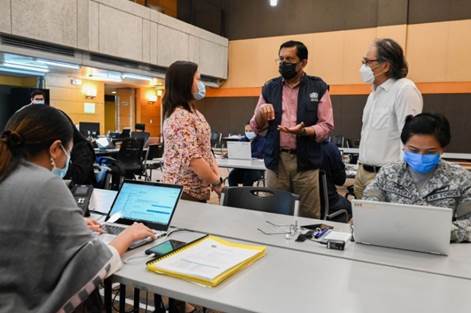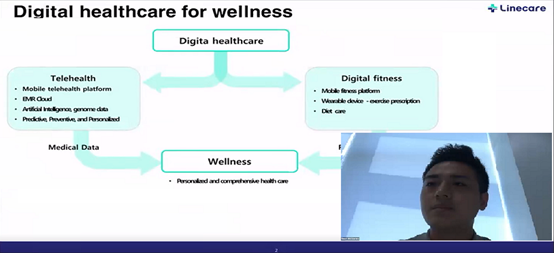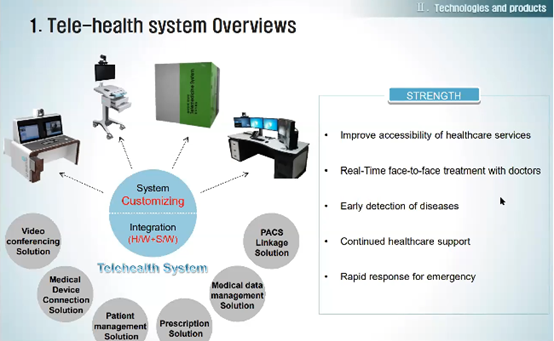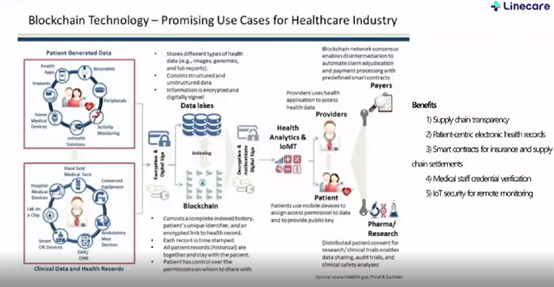2021-08-31 Donghyun Kim, Manila Trade Center, Philippines
– Expectations for improved accessibility, early detection of diseases, and electronic prescription issuance when introducing a telemedicine system –
– Inequality of access to medical care, poor digital health infrastructure in rural areas, etc. need to be addressed –
Health Indicators and Problems in the Philippines
In the Philippines, medical facilities are concentrated mainly in the metropolitan area, and it is not easy to use medical services in rural areas. Although the demand for telemedicine in the Philippines has continued to increase, the need for telemedicine is increasing as it becomes difficult for patients to visit hospitals due to the COVID-19 pandemic. The Philippine government is trying to solve the problem of Filipinos living in provincial areas and having difficulty receiving medical benefits through the introduction of a telemedicine system in the wake of COVID-19.
Due to the 'Enhanced Community Quarantine (ECQ)' implemented by the Philippine government to prevent the spread of COVID-19, Filipinos living in areas other than the metropolitan area have low-income families, making it difficult to distribute computers or smartphones or access the Internet. There are also places that are not properly equipped. For the development of telemedicine, the Philippines also seeks to improve environmental issues such as the establishment of medical infrastructure.
Philippine government's plan to strengthen public health care
[Philippines One Hospital Command (OHCC)]

Source: Philstar
Due to the COVID-19 pandemic, people are reluctant to visit hospitals in person, which has led to a surge in demand for telemedicine. Because telemedicine is efficient in terms of time and cost, and is conducted non-face-to-face, it has emerged as an alternative to face-to-face treatment amid the spread of COVID-19. In particular, patients with mild symptoms are preferred because they can easily get a prescription. The Philippines currently provides patient referrals and telemedicine services through the government's One Hospital Command (OHCC). It is said that telemedicine is carried out through OHCC from a hotline only, and the telemedicine system is always on standby. OHCC was launched to monitor the occupancy of hospitals and other facilities due to COVID-19 and to facilitate the Congress of COVID-19 patients.
OHCC moved to the Philippine International Convention Center in June and additional staff are being hired to run the command center. Patients needing assistance can contact the center via the hotlines 6-0919-977, 3333-0915 and (7777)-02-886 or send an application through the PureForce citizen app. The Philippines is preparing to build a network with local governments by expanding not only OHCC but also local government units. Local governments should set up a hotline for those who need remote medical care or guidance, which can prevent the spread of the delta mutation and overload the national medical system.
Introduction of telemedicine system in Korea
KOTRA Manila Trade Center invited Kangwon National University, Hanyang University, Body Tech Med, The i Holdings, InBody Co. An online briefing session was held.
[Digital healthcare for well-being]

Material: Linecare
In the digital age, medical devices, production systems, and a significant portion of the Internet of Things (IoT) depend on technological advances. Telemedicine contributes to the improvement of work efficiency and convenience of medical workers, workplaces, and institutions, and as medical services develop, medical services are also becoming digital.
Utilization of telemedicine system, which is widespread in Korea, can provide a solution to all hospitals in the Philippines. The Philippines consists of three large islands: Luzon, Visayas and Mindanao. Excluding technological advances such as telemedicine, Manila is also clearly a leader in providing key medical services.
telemedicine system
[Overview of telemedicine system]

Source: Yushin C&C
Advantages of the telemedicine system include improved access to medical services, real-time face-to-face treatment with a doctor in charge, and early detection of diseases and issuance of prescriptions through remote diagnosis. In addition, in case of emergency, it is possible to respond quickly and continuous medical support is possible.
The telemedicine system will provide patients with technology and clinical services as a new and creative way to book appointments. It provides an opportunity for outpatients to receive treatment even if they live in a rural area. In addition, medical records have the advantage of being more systematic, reliable, and accurate.
Utilization of medical industry through blockchain technology
[Blockchain Technology – Use Cases for Medical Industry]

Material: Linecare
The telemedicine system is being accepted as a natural trend with the development of future technology. It is also expected to present solutions to medical conflicts in developing countries (unfair access to medical care, poor digital health infrastructure for rural areas, national Internet support, etc.).
Recently, as the capabilities of the telemedicine system have been expanded, functions such as patient monitoring, electronic prescription issuance, doctor attendance check, health and wellness-related e-commerce service subscription, and even indoor exam schedule confirmation have been added.
Currently, hospitals and research institutes in each country are continuously cooperating with the government for the development of telemedicine, and are working to standardize processes, technologies, protocols, data profiling, etc. Public health includes all municipal and institutional medical activities related to providing universal medical access to citizens and protecting citizens' health, regardless of region or social class.
implication
The COVID-19 pandemic has had a huge impact on the daily lives of people around the world. In this situation, the government must solve the COVID-19 pandemic situation by providing innovative and excellent medical services such as active use of systemized medical equipment and compliance with medical protocols.
In an interview with KOTRA Manila, an official from a Philippine medical equipment company, Korea is providing cutting-edge medical equipment and diagnostic solutions such as telemedicine systems that can be applied in the Philippines during the COVID-19 pandemic. The biggest advantage of cutting-edge medical equipment is convenience. Doctors say they can reduce the risk of transmission of viruses such as COVID-19 by examining patients face-to-face.
Now that the movement of the general public is limited due to the COVID-19 pandemic, the introduction of a telemedicine system and online consultation in the Philippines is an accessible solution regardless of where the patient resides. do.
Source: Philippines Philstar, Kangwon National University, Hanyang University, Body Tech Med Co., Ltd., The i Holdings, InBody Co., Ltd., Yushin C&C, etc. KOTRA Manila Trade Center



